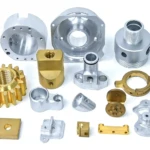Understanding Postural Orthostatic Tachycardia Syndrome (POTS) and the Role of Medical Devices
Postural Orthostatic Tachycardia Syndrome Medical Devices (POTS) is a condition characterized by an abnormal increase in heart rate upon standing, leading to symptoms such as dizziness, fatigue, and fainting. Managing POTS often involves lifestyle modifications, medications, and the use of specialized medical devices.
Medical Devices for Managing POTS
Several medical devices can assist in monitoring and alleviating POTS symptoms:
Blood Pressure and Heart Rate Monitors: Devices like upper arm cuffs and smartwatches equipped with heart rate monitors and electrocardiograms enable patients to track their cardiovascular health regularly.
Wearable Devices:
- Ear Optical Monitors: These devices help monitor blood flow to the head, providing real-time data on cerebral circulation.
- Neuromodulation Devices: Ear clip devices can help reduce POTS symptoms by stimulating specific nerves.
- In-Ear Wearables: These can measure blood flow to the head, offering insights into cerebral hemodynamics.
Medical Alert Systems: These systems enable POTS patients to contact emergency services promptly. Some include fall detection and GPS tracking, enhancing safety.
Compression Garments: Wearing compression garments can help reduce orthostatic tachycardia by improving venous return and stabilizing blood pressure.
CNC Machining in Medical Device Manufacturing
CNC (Computer Numerical Control) machining plays a pivotal role in the production of medical devices, including those used for managing POTS. This technology offers several advantages:
Precision and Accuracy: CNC machining ensures the production of components with tight tolerances, essential for the functionality and safety of medical devices.
Customization: It allows for the creation of patient-specific devices, such as custom prosthetics and implants, tailored to individual anatomical requirements.
Material Versatility: CNC machining can process a wide range of materials, including biocompatible metals and plastics, suitable for medical applications.
Rapid Prototyping: This technology facilitates quick prototyping, enabling faster development and testing of new medical devices.
Advantages of Rapid Prototyping in Medical Device Manufacturing
Rapid prototyping offers several benefits in the medical device industry:
Accelerated Development: It shortens the time from concept to market, allowing for quicker patient access to new treatments.
Cost Efficiency: By identifying design flaws early, rapid prototyping reduces the costs associated with mass production of defective devices.
Enhanced Innovation: It encourages experimentation with new designs and materials, fostering innovation in medical technology.
In summary, the integration of specialized medical devices and advanced manufacturing technologies like CNC machining and rapid prototyping significantly enhances the management and treatment of Postural Orthostatic Tachycardia Syndrome. These innovations improve patient outcomes by providing precise, customized, and efficient solutions tailored to individual needs.

















